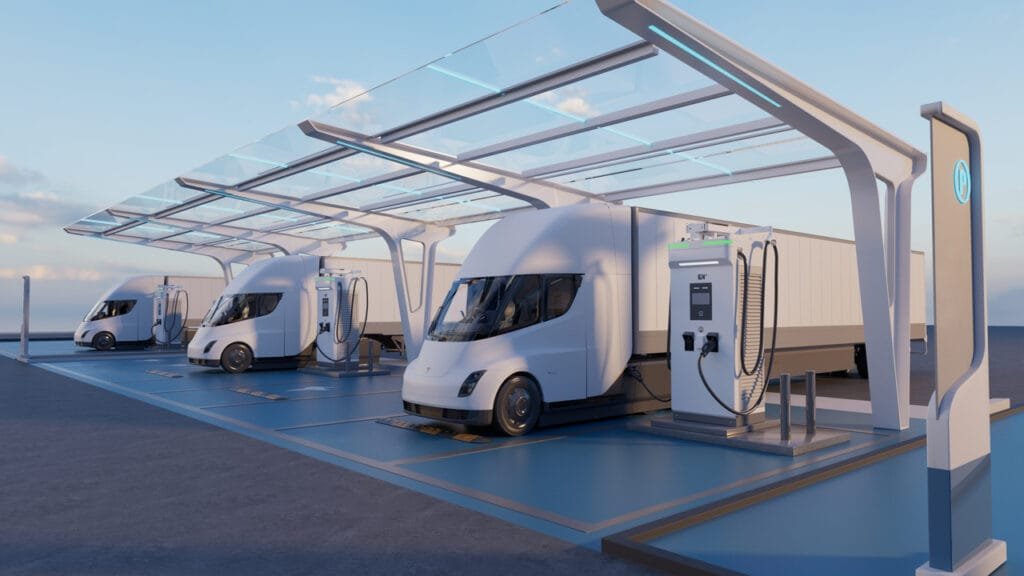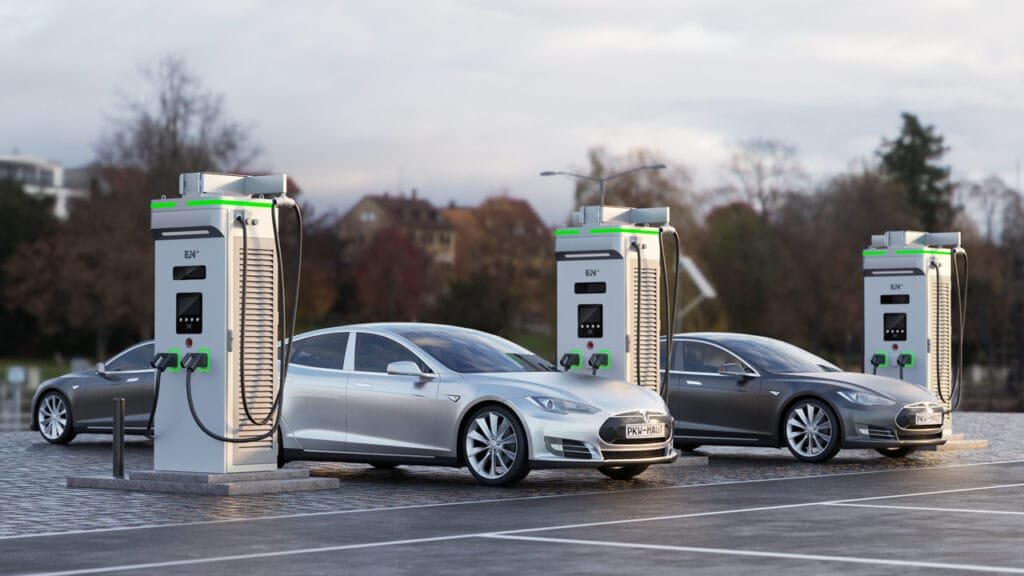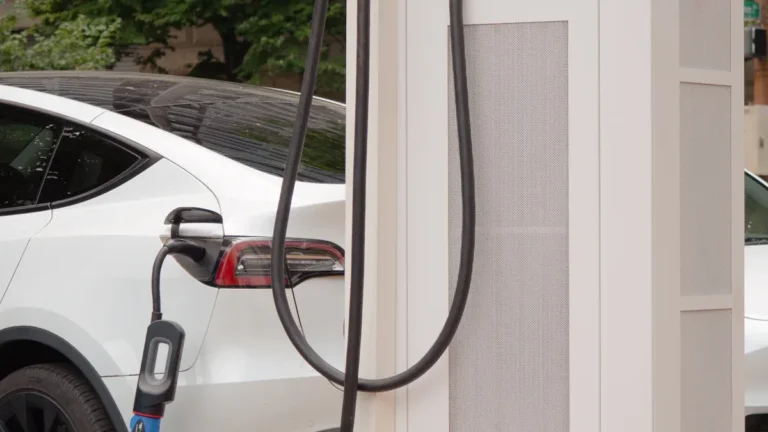As electric vehicles (EVs) continue to rise in popularity, the demand for efficient and effective charging solutions becomes increasingly important. Smart EV charging emerges as a revolutionary approach, promising not only to optimize the charging process but also to support grid stability and enhance the integration of renewable energy. In this blog, we will delve into the intricacies of smart EV charging, exploring its various facets, benefits, and future potential.
What is EV Smart Charging?
EV smart charging refers to an advanced method of managing the charging process of electric vehicles. Unlike traditional charging methods, smart charging optimizes when and how much EVs are charged by utilizing real-time data and communication between the vehicle, the charger, and the grid. This optimization helps reduce costs, manage grid demand, and integrate renewable energy sources effectively.
Smart charging involves several key components working together. The electric vehicle is the primary device requiring charging. The smart charger supplies electricity to the EV and communicates with other systems. The grid, or the electricity supply network, interacts with the charging process to ensure efficient energy use. Finally, the Charging Station Management System (CSMS) is the software that controls and optimizes the entire charging process, ensuring seamless integration and functionality.

How Does Smart EV Charging Work?
Smart EV charging operates through a combination of communication, control, and data analysis. Here’s how it works:
Communication
- The EV, smart charger, and the grid communicate with each other to determine the optimal charging times and rates.
- This communication ensures that charging happens at times when electricity is cheaper and the grid is less strained.
Control
- Scheduled Charging: Users can set specific times for their EVs to charge, often during off-peak hours when electricity rates are lower.
- Dynamic Load Management: The charging speed can be adjusted in real-time based on grid demand, preventing overloads and ensuring efficient energy use.
Data Analysis
- The system uses real-time data, including grid load, energy prices, and the EV’s battery status, to make informed decisions about charging.
- Advanced algorithms help optimize the charging schedule to balance cost, convenience, and grid stability.
While smart charging focuses on optimizing the charging process for your EV, smart energy management takes a holistic approach, overseeing the entire energy ecosystem to ensure efficiency and sustainability. By integrating advanced technologies, smart energy management enhances the capabilities of smart charging, providing a seamless and intelligent charging experience.
Understanding the Three Smart Charging Techniques
After discussing how smart charging works, let’s delve into three specific techniques that are central to optimizing electric vehicle (EV) charging. These techniques—load shifting, peak shaving, and dynamic load balancing—play a crucial role in ensuring efficient and cost-effective charging while maintaining grid stability.
Load Shifting
Load shifting involves altering the timing of EV charging to take advantage of periods when electricity demand is lower, often referred to as off-peak hours. By scheduling charging sessions during these times, typically overnight or during the middle of the day, EV owners can benefit from lower electricity rates while also reducing the strain on the electrical grid. This technique not only helps in balancing the grid but also promotes the use of cleaner, cheaper energy sources that are more available during off-peak times.
Peak Shaving
Peak shaving aims to reduce electricity consumption during times of highest demand, known as peak periods. By controlling and limiting the power drawn by EV chargers during these peak times, peak shaving helps to avoid high electricity costs associated with peak demand charges and minimizes the risk of overloading the grid. This technique ensures that the electrical infrastructure is used more efficiently, thereby enhancing grid reliability and stability.
Dynamic Load Balancing
Dynamic load balancing is a technique that dynamically adjusts the power allocated to each EV charger based on real-time demand and the available capacity of the electrical system. This method ensures that the total power usage remains within the limits of the supply infrastructure while optimizing the charging speed for each vehicle. Dynamic load balancing is particularly useful in settings with multiple EV chargers, such as workplaces or public charging stations, where it helps to prevent overloading and maximizes the efficiency of the available electrical capacity.
How Does Smart Energy Management Help Overcome Grid Limitations?
With the increasing adoption of EVs, the electricity grid faces significant challenges, such as potential overloads during peak times and the need to integrate intermittent renewable energy sources. Smart energy management helps address these challenges by optimizing energy use and balancing the load on the grid.
Balancing Load
- By scheduling charging during off-peak hours, smart energy management reduces the demand on the grid during peak times.
- Dynamic load management adjusts charging speeds based on real-time grid conditions, preventing overloads and ensuring efficient energy distribution.
Integrating Renewable Energy
- Smart energy management systems can prioritize charging when renewable energy sources, like solar and wind, are abundant, reducing reliance on fossil fuels.
- This integration helps stabilize the grid by matching energy supply with demand.
Preventing Grid Overload
- Smart charging systems can slow down or pause charging during times of high grid demand, preventing overloads and blackouts.
- By distributing the charging load more evenly, smart energy management enhances grid reliability and efficiency.
What Are the Benefits of Smart Charging?
From a user’s perspective, smart charging offers several benefits that cater to the needs and preferences of EV drivers. Understanding these benefits is crucial for the widespread adoption of smart charging technologies.
Cost Savings
- Smart charging allows drivers to charge their EVs during off-peak hours when electricity rates are lower, leading to significant cost savings.
- Dynamic pricing and real-time monitoring enable drivers to take advantage of the most economical charging times.
Convenience and Flexibility
- Users can schedule charging sessions to fit their daily routines, ensuring that their EVs are always ready when needed.
- Mobile apps and smart charging platforms provide real-time monitoring and control, allowing drivers to manage charging from anywhere.
Environmental Impact
- By integrating renewable energy sources, smart charging helps reduce the carbon footprint associated with EV charging.
- Drivers can choose to charge their EVs during times when renewable energy is most available, contributing to a greener environment.
Reliability and Speed
- Smart chargers often come with faster charging capabilities, reducing the time needed to fully charge an EV.
- Reliable charging schedules ensure that drivers have access to fully charged vehicles without unexpected delays.
Advantages of Smart Charging in Commercial and Industrial Buildings
Smart EV charging is not limited to residential settings; it also has significant applications in commercial and industrial environments. Businesses can also benefit greatly from implementing smart charging solutions.
Cost Efficiency
- Commercial buildings can optimize energy use and reduce electricity costs by managing charging schedules and taking advantage of off-peak rates.
- Energy management systems can balance the load across multiple chargers, ensuring efficient energy distribution.
Operational Flexibility
- Smart charging allows businesses to manage their fleet vehicles more effectively, ensuring they are charged and ready for use when needed.
- Companies can provide convenient charging options for employees and customers, enhancing overall satisfaction.
Enhanced Sustainability
- Implementing smart charging in commercial settings supports corporate sustainability goals by reducing carbon emissions and promoting the use of renewable energy.
- Businesses can demonstrate their commitment to environmental responsibility, improving their public image.

Smart EV Charging and Bi-directional Charging
In addition to the fundamental smart charging techniques we’ve explored, another innovative approach gaining traction is bi-directional charging. This concept not only enhances the flexibility and efficiency of electric vehicle (EV) charging but also offers significant benefits for both EV owners and the broader electrical grid.
What is Bi-directional Charging?
Bi-directional charging allows EVs to both draw power from the grid and supply power back to it. This capability transforms EVs into mobile energy storage units, capable of supporting the grid during peak demand or emergencies, thus contributing to overall grid stability and energy efficiency.
Types of Bi-directional Charging
- Vehicle-to-Grid (V2G): This type allows EVs to return power to the electrical grid, helping to balance supply and demand, especially during peak usage times.
- Vehicle-to-Home (V2H): With V2H, EVs can provide power directly to a home, functioning as a backup energy source during outages or reducing reliance on the grid during high-cost periods.
- Vehicle-to-Building (V2B): Similar to V2H, this type enables EVs to supply power to commercial buildings, helping to manage energy costs and provide backup power during outages.
- Vehicle-to-Load (V2L): V2L allows EVs to power specific loads or devices directly, making it useful for outdoor activities, remote locations, or emergency situations.
- Vehicle-to-Vehicle (V2V): V2V enables one EV to charge another, providing flexibility and support in situations where charging infrastructure is limited or unavailable.
- Vehicle-to-Everything (V2X): V2X is a broader concept where EVs can supply power to various systems, including homes, buildings, and even other vehicles, enhancing overall energy flexibility and resilience.
Benefits of Integrating Bi-directional Charging
- Grid Stabilization: By balancing supply and demand more effectively, bi-directional charging supports grid stability, reducing the risk of overloads and blackouts.
- Cost Efficiency: EV owners can benefit from lower energy costs by using stored energy during high-price periods and potentially earning income by selling excess power back to the grid.
- Energy Resilience: Bi-directional charging provides an additional layer of energy security, allowing EVs to serve as emergency power sources for homes or businesses during outages.
- Promotion of Renewable Energy: By storing and discharging renewable energy efficiently, bi-directional charging supports the broader adoption of clean energy sources, contributing to environmental sustainability.
With bi-directional charging integrated into smart charging strategies, we can achieve a more efficient, resilient, and sustainable energy system. This synergy not only enhances the utility of EVs but also plays a critical role in the transition to a smarter, greener energy future.
Embracing Evchargo Cloud, a Smart EV Charging Platform of EN Plus
Smart EV charging is essential for optimizing energy use, reducing costs, and ensuring grid stability. Key techniques like load shifting, peak shaving, and dynamic load balancing enhance efficiency by aligning charging times with off-peak hours, distributing power evenly, and reducing demand during peak periods. These strategies not only benefit EV owners by lowering energy costs but also support the broader energy system by preventing overloads and promoting the use of renewable energy.
Evchargo Cloud, an EV charging management platform provided by EN Plus, embodies these smart charging principles, offering a comprehensive solution for managing EV charging stations. Designed for commercial applications, Evchargo Cloud helps businesses efficiently oversee multiple charging points, ensuring a seamless experience for EV drivers. This platform simplifies the management process, making it easier for businesses to provide reliable and cost-effective charging services, thereby contributing to the sustainable growth of the EV ecosystem.


